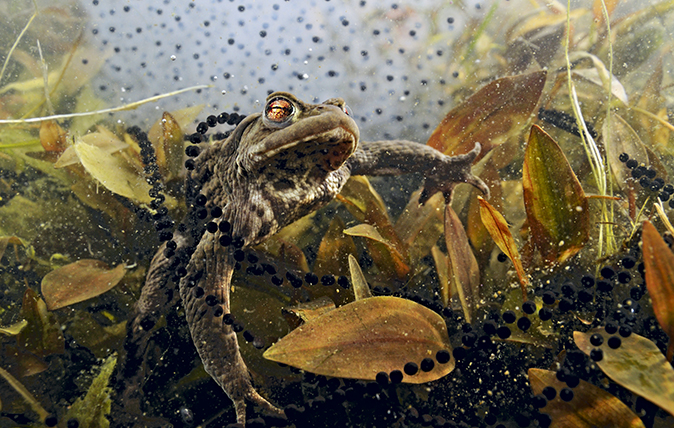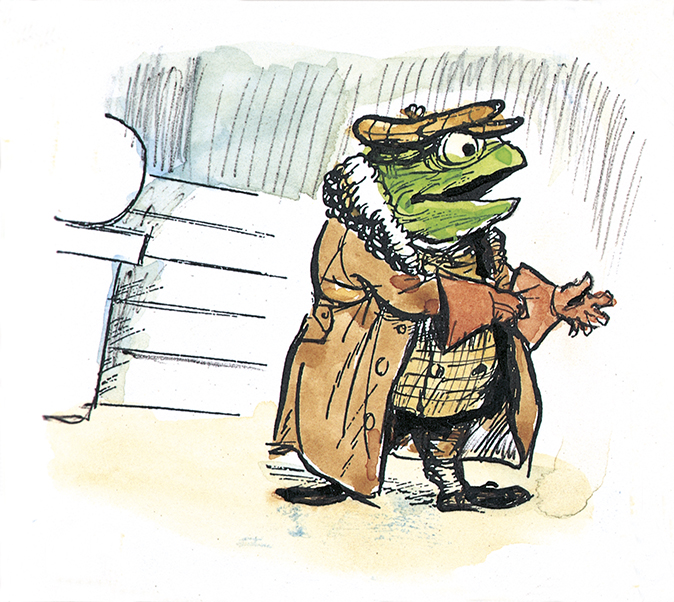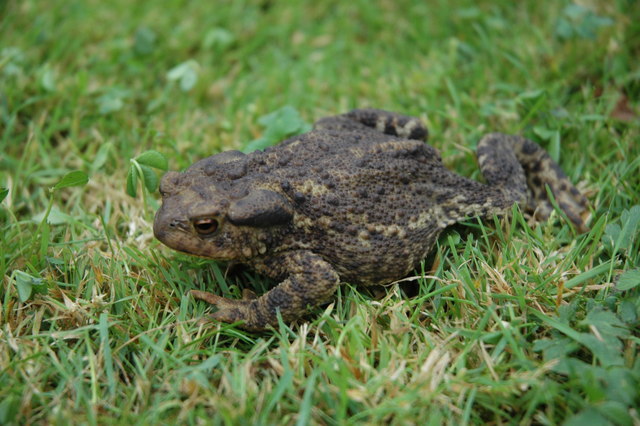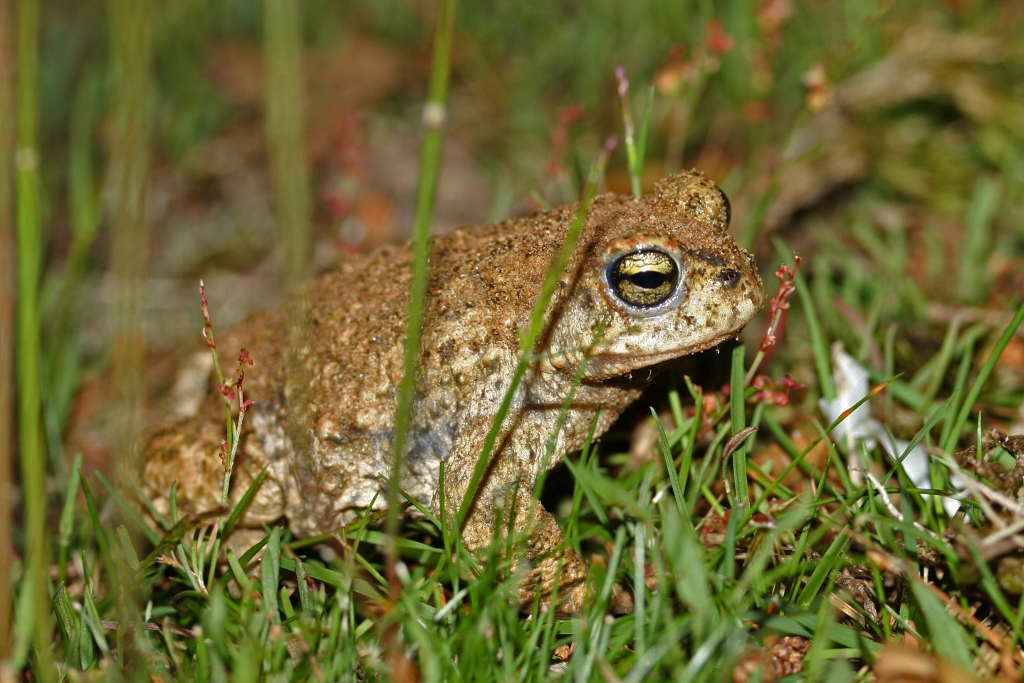The tale of Mr Toad: From medieval instrument of torture to The Wind in the Willows
Toads might have been feared and reviled for 1,000 years, but the past century has seen us warm to these vocal amphibians, observes Ian Morton.


In the first scene of Macbeth – featuring an open place, thunder, lightning and those three witches – a brief incantation is followed by the chant ‘Paddock calls’ and the women vanish. Paddock? The modern audience may ponder the significance, but not Shakespeare’s. Paddock was another word for toad and the little amphibian was performing its recognised role as a ‘familiar’ – an animal intermediary through which demonic powers were channelled.
The toad was an established and ominous character and all the Bard’s theatrical references to it were vituperative. Warty and mystical, it appeared at other levels of public entertainment, none more histrionic than in performances by the toad-eater, a mountebank’s assistant who swallowed the creature – or at least pretended to. His role morphed into the toady, the derided sycophant of anyone with influence.
Medieval England’s toads were poisonous, a result of their secretion of a defensive irritant, and folk believed that they personified the Devil. He lurked in churchyards in toad form and a communicant who gave him a piece of consecrated bread became a witch or wizard. The Douce Apocalypse’s late-13th-century manuscript accorded the Devil his own coat of arms, featuring three green toads. The ability of Satan to masquerade as a toad was noted by the Rev Edward Topsell in his Historie of Serpents of 1608 and by Milton in Paradise Lost in 1667.

Medieval toads spat poison and fire and were valued instruments of torture. Thomas of Monmouth wrote that, in the reign of Stephen (1135–54), the King’s enemies were thrown into dungeons, where they suffered ‘cold, hunger, stench and attacks of toads’. In his Itinerarium Cambriae of 1191, Gerald of Wales recorded that friends of a young man pursued by a toad plague hauled him to the top of a tree in a bag to escape, but the creatures climbed up and devoured him, leaving a bare skeleton.
The History and Antiquities of Lyme Regis and Charmouth, published in 1834, recorded the tradition: ‘Toads that gained access to a house were ejected with the greatest care and no injury was offered because they were regarded, as being used as familiars by witches, with veneration and awe.’ And they were forever poisonous. Thomas Lupton (A Thousand Notable Things, 1791) related how two lovers died after rubbing their teeth with sage leaves from a plant under which was ‘a great toad found which infected the same with his venomous breath’. Lupton recommended that rue be planted round sage plants to keep toads away.
Toads had long wielded influence across Europe. Pliny the Elder told 1st-century Romans that a toad in the room should impose silence on everyone present. A bone from its right side would prevent water from boiling, he advised, and one from the left side would fend off a dog attack. In Romania, it was said that anyone who killed a toad was capable of murdering his own mother.
Gypsy mythology admired a Fairy Queen who lived in a toad-shaped golden castle. Across Europe, women seeking motherhood left small toad statuettes at shrines. Estonians believed that killing a toad was a pious act, which excused sins for the next nine days. Scottish lore suggested that, if a man carried a dried toad’s tongue, he became irresistible to any woman he wanted.
Sign up for the Country Life Newsletter
Exquisite houses, the beauty of Nature, and how to get the most from your life, straight to your inbox.
The toad was widely believed to carry a treasure in its head – the toad stone, a supposed gem that was said to change colour in the presence of poison and to provide an antidote, an attractive attribute when that was a favoured means of murder. It was given this credence in De Proprietatibus Rerum, a 13th-century work by a Franciscan cleric, and remained desirable until the 18th century, mounted as an amulet or in a ring.

In reality the fossilised teeth of a Jurassic ancestor, Lepidotes, the toad stone received Shakespeare’s accolade in As You Like It with the lines: ‘Sweet are the uses of adversity,/Which like the toad, ugly and venomous,/Wears yet a precious jewel in his head.’ They were spoken not by evil hags, but by a duke. Topsell advised that the stone should be removed from a living toad placed on a red cloth. After Linnaeus classified the common toad as Bufo bufo in 1758, the stone was called bufonite.
Britain has two species, but the widely dispersed common toad bears the weight of history. The natterjack (Bufo calamita), confined mainly to sandy coastal locations and having a national population of some 10,000, has been spared the burden of mystical and medicinal roles.

At an annual Toad Fair held in Dorset in early May, charms consisting of legs or heads chopped off living toads and placed in bags were sold to cure scrofula. The black powder of an incinerated toad worn in a silk bag round the neck would cure both scrofula and rheumatism. If a sufferer had a diseased body part, the corresponding part torn off a toad, wrapped in parchment and worn round the neck would effect a cure.
Cambridgeshire boasted a Toadmen cult, the members of which sought control over horses through a ritual involving a skinned toad, its bones tossed into a running stream, a full moon and three nights of confrontation with the Devil in a graveyard. This cult was said to be in existence into the 1930s.
On Dartmoor lived an old widow known as the Toad Woman who could cure toothache, but would call down dire misfortune if offended. She kept 15 toads in a jar and wove black magic by having them clamber over a Bible, especially three nasty ones called Croppy, Rumbo and Krant.
Many villages had crones appreciated as wise women or feared as witches – or both – and toads were essential as familiars or as contributors to spell-casting potions. Their saliva, known as swelter’d venom, was mixed with the sap of the sow-thistle and painted on the body in the form of a crooked cross to render a witch invisible.
The toad was significantly rehabilitated by Kenneth Grahame, whose The Wind In The Willows of 1908 gave us Mr Toad of Toad Hall, put together from tales devised to entertain the author’s young son Alastair. If Grahame had another agenda, it was to satirise a flamboyant Edwardian squirearchy, whose headlong antics in their poop-poop motorcars brought peril to many a rural road, horses rearing and chickens scattering in clouds of dust, but if he didn’t set out to rescue the toad’s reputation after centuries of opprobrium, that was surely his achievement.
His readership warmed to Toad’s manic appeal, the character was perpetuated in A. A. Milne’s play and continues to feature in film and TV. Mr Toad remains one of literature’s anthropomorphic heroes.
A sympathetic modern attitude towards the toad re-emerged in the early-1970s TV series Catweazle, featuring an amiably bumbling 11th-century wizard, played by Geoffrey Bayldon. Transported to modern times, he struggled to cope with the help of Touchwood, his toad familiar, but truly more friend than fiend. Touching wood for good luck is a Christian tradition from the days when amulets of wood allegedly from the True Cross were sold to pilgrims at every shrine – the very antithesis of the toad’s satanic mythology.

At home with Uncle Monty: Design cues from the Withnail and I icon
Thirty years after the release of Withnail and I, Arabella Youens examines the stylistic legacy of the fictional character's taste

Credit: Caters
Dormice: Britain’s sleepiest, and most charming little creatures
David Profumo takes a look at the lovely little dormouse – a delightful little creature which spends 75 per cent

Credit: Alamy
Hibernation: The animal phenomenon that might just save the human race
For centuries, naturalists pondered how a warm-blooded creature could descend into a near-death winter state and surface unscathed the following
Country Life is unlike any other magazine: the only glossy weekly on the newsstand and the only magazine that has been guest-edited by HRH The King not once, but twice. It is a celebration of modern rural life and all its diverse joys and pleasures — that was first published in Queen Victoria's Diamond Jubilee year. Our eclectic mixture of witty and informative content — from the most up-to-date property news and commentary and a coveted glimpse inside some of the UK's best houses and gardens, to gardening, the arts and interior design, written by experts in their field — still cannot be found in print or online, anywhere else.
-
 What should 1.5 million new homes look like?
What should 1.5 million new homes look like?The King's recent visit to Nansledan with the Prime Minister gives us a clue as to Labour's plans, but what are the benefits of traditional architecture? And can they solve a housing crisis?
By Lucy Denton
-
 The battle of the bridge, Balloon Dogs and flat fish: Country Life Quiz of the Day, April 15, 2025
The battle of the bridge, Balloon Dogs and flat fish: Country Life Quiz of the Day, April 15, 2025Tuesday's quiz tests your knowledge on bridges, science, space, house prices and geography.
By James Fisher